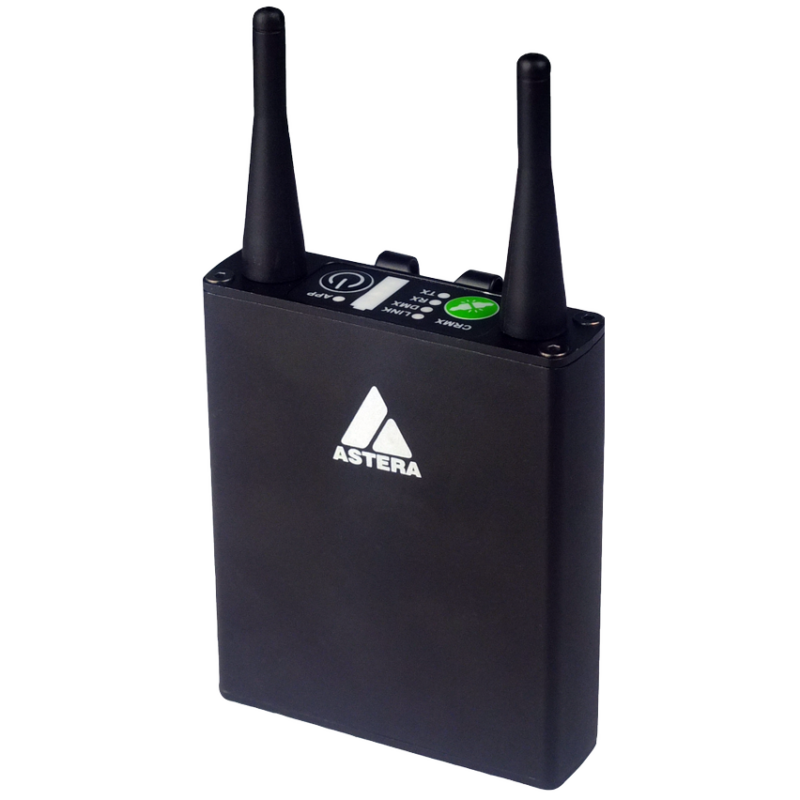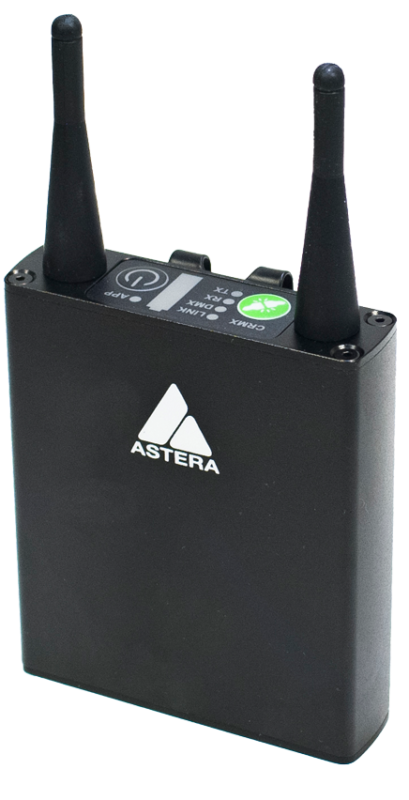Артикул | ART7-U |
|---|---|
Вход постоянного тока | 5 В постоянного тока – 2 A |
Напряжение аккумулятора | 3.7 V |
Время работы от аккумулятора | 72 ч (App) 8-10 ч (CRMX) |
Время зарядки (номинал) | 8 часов |
Порты | Микро-USB – для зарядки, разъем 3,5 мм – для входа DMX |
Разъем питания постоянного тока | Micro-USB |
BluetoothBridge BTB | Встроенный |
Bluetooth Classic | Да |
Беспроводные протоколы | УВЧ, CRMX, Bluetooth 4.0 |
Диапазон беспроводной связи | CRMX: до 300 м УВЧ: до 300 м Bluetooth: до 3 м |
Микрофон | Встроенный |
Степень защиты | IP20 |
Рабочая температура окружающей среды | 0 – 40 °C / 32 – 104 °F |
Вес | 0,23 кг |
Размеры Д х Ш х Г | 146 мм x 78 мм x 30 мм |
Варианты монтажа | Поясная клипса |
*Минимальное требование для устройства Astera App: Bluetooth 4.2

